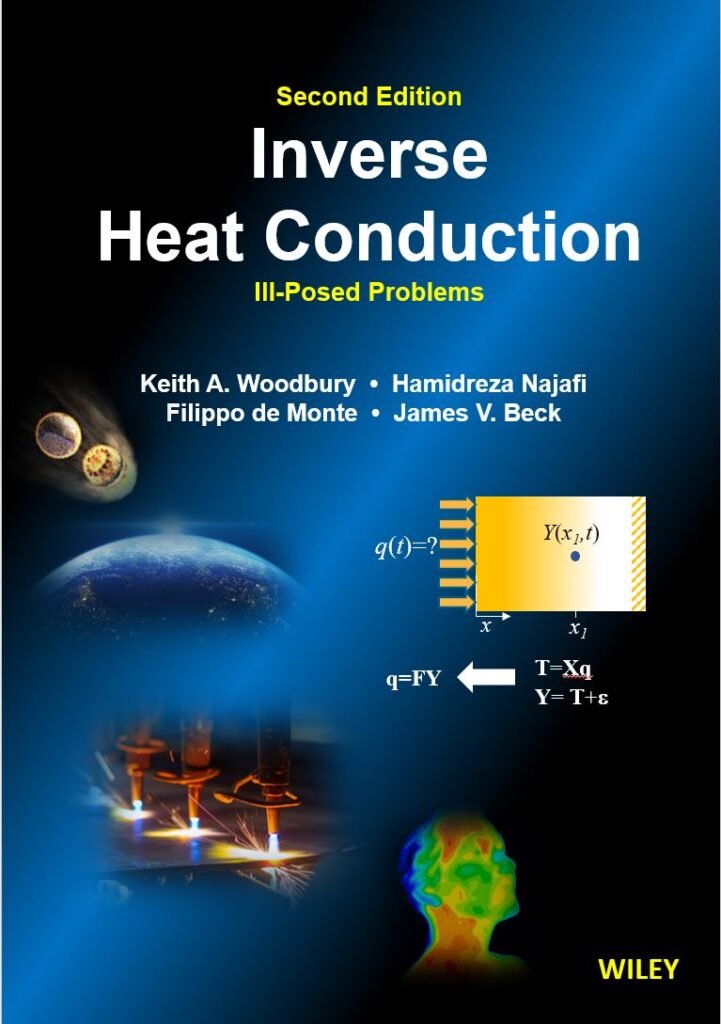
This heavily revised and expanded second edition retains the focus of the earlier edition on solution of linear problems. Exact analytical “building block” solutions are presented and superposition techniques are used to create approximate solutions to problems with piecewise linear variation of the unknown surface heat flux in addition to the piecewise constant assumption used exclusively in the first edition.
Historical classic techniques of Stolz and Beck are explained in depth and Tikhonov Regularization is given expanded treatment. New material explains the truncated singular value decomposition (TSVD) method and the conjugate gradient iterative method of solution. Both the adjoint method and the Kalman Filtering technique, which are suitable for non-linear problems, are explained. The role of regularization to add stability at the expense of adding bias to the solution is discussed for each IHCP method.
The “filter” representation for IHCP solutions is explained and is used to examine the intrinsic nature of each of the solution methods presented. New chapters exploit the Tikhonov filter concept for solution of two-dimensional problems and problems with multilayered domains.
New chapters include discussion of methods for choosing the appropriate amount of regularization in an IHCP solution and using convolution concepts to correct temperature measurements. The chapter on estimating heat transfer coefficients is significantly revised and expanded.
Exact Heat Conduction Solutions
Fundamental one- and two-dimensional solutions presented are used as building blocks
Superposition Approximations
Discrete piecewise constant and Piecewise linear approximations are constructed:
{T} = [X]{q}
Filter Matrix Perspective
Virtually all inverse problem solutions can be cast in a “filter form”:
{q} = [F]{Y}
IHCP Solution Methods
Stolz, Function Specification, TIkhonov Regularization, Conjugate Gradient and Adjoint, Truncated SVD, Kalman Filtering
Optimization of Regularization
Minimize meas squared error in heat flux, Morozov Discrepancy Principle, L-curve, Generalized Cross-Validation
Comparison of Solutions
A common suite of example test problems is used to optimize and exercise all the methods
Multiple heat flux estimation
Two-dimensional transient problems
Estimating heat transfer coefficient
Lumped capacitance models, one-dimensional models; both constant HTC and time varying HTC
Bias Error in Temperature Measurement
With a suitable model for the measurement system, bias in temperature measurement can be corrected and/or its influence on the IHCP solution removed
(click on any image for lightbox view) (hover over filmstrip to pause action)











